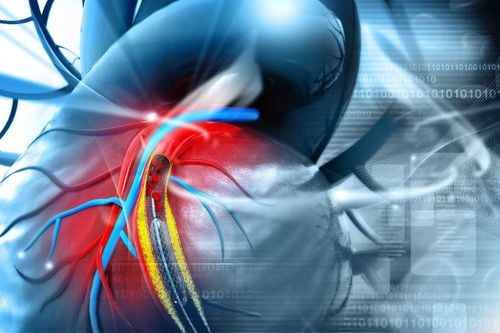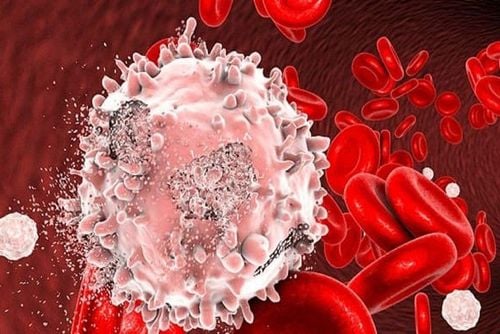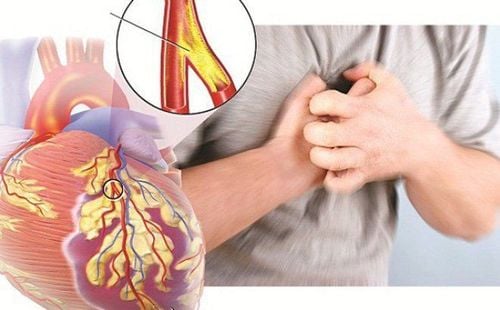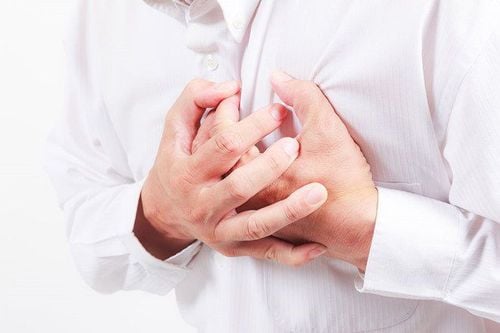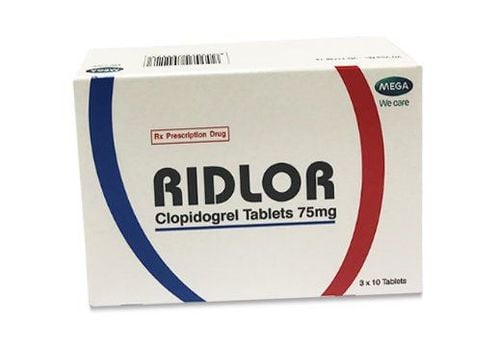This is an automatically translated article.
The article is professionally consulted by Master, Doctor Pham Van Hung - Department of Medical Examination & Internal Medicine - Vinmec Danang International General Hospital.
Acute coronary syndrome (also known as acute coronary syndrome) is a dangerous cardiovascular syndrome, which can be life-threatening.
1. What is acute coronary syndrome?
Acute coronary syndrome (also known as acute coronary syndrome for short) is a term used to describe a series of conditions where there is a sudden lack of blood supply to the heart muscle. These conditions include: acute myocardial infarction with ST-segment elevation on the electrocardiogram, and acute coronary syndrome without ST-segment elevation. Non-ST-elevation acute coronary syndromes include two forms: non-ST-elevation myocardial infarction and unstable angina.Clinically and electrocardiographically there is no difference between these two conditions, the difference is that myocardial infarction without ST-segment elevation has increased myocardial biomarkers on laboratory tests, and angina Not stable, no.
Acute coronary syndrome is an emergency of coronary artery disease, a leading cause of cardiovascular death and serious complications later, in which, acute coronary syndrome without ST elevation leading rate in acute coronary events.
2. How is acute coronary syndrome diagnosed?

Chest pain (angina) or extreme discomfort, often described as tightness, heaviness, squeezing, or tightness. burning. The pain radiates from the chest to the shoulders, arms, upper abdomen, back, neck, or jaw. Nausea or vomiting. Stomach indigestion. Shortness of breath. Sudden sweating. Lightheadedness, dizziness, or fainting. Unusual, inexplicable fatigue. Feeling restless, anxious. Chest pain or discomfort are the most common symptoms. However, the signs and symptoms present vary from person to person, depending on age, sex, and other pre-existing medical conditions. Women, the elderly, and people with diabetes may not experience chest pain or discomfort (but may still have other signs and symptoms).
Acute coronary syndrome is a cardiovascular emergency. Chest pain or extreme discomfort can be a sign of many serious, potentially life-threatening conditions. Seek emergency help right away for timely support, diagnosis and intervention, avoiding potentially bad situations.
Emergency physicians, when recognizing symptoms and signs related to acute coronary syndromes, will conduct laboratory tests and techniques in parallel with clinical examination and pre-exploration. patient history. Those tests and techniques include:
Electrocardiogram: electrodes will be attached to the skin to measure the electrical activity of the patient's heart. Abnormal electrocardiogram results reflect heart disease. From the information collected on the electrocardiogram results, the doctor can determine where the abnormality of the heart is located and what is the cause. An electrocardiogram may be repeated several times for diagnosis and monitoring. Blood tests: Certain enzymes can be found in the blood if there is damage to heart muscle cells that leads to destruction of heart muscle tissue. A positive test result indicates the presence of a myocardial infarction. The results obtained from the electrocardiogram and blood tests (along with the patient's signs and symptoms) are often used to make the initial diagnosis of ACS. And this information will help your doctor determine what the specific condition of the acute coronary syndrome is.
Other techniques may be indicated to clarify the condition, or to find the cause, or to have appropriate diagnostic, treatment and monitoring methods:
Coronary angiography: here It is a technique that uses X-ray images to evaluate the condition of the blood vessels that feed the heart. A long, small catheter is inserted into the brachial artery or femoral artery to reach an artery in the heart. Contrast is injected into the blood vessels through the catheter. X-ray images after using the contrast agent will show the condition of the blood vessels (circulation status, location of narrowing). Along with the diagnosis, doctors can also intervene right during the scan. Echocardiography: An echocardiogram is a technique that uses ultrasound waves through a transducer to reproduce an image of the heart on a screen. The doctor will rely on the observed images to evaluate the activity of the heart as well as detect any abnormalities that are occurring. Myocardial perfusion scintigraphy: This technique will help determine if the heart muscle is adequately perfused. The results of the scan will help the doctor locate the ischemic heart muscle. Coronary computed tomography (CT) scan: helps doctors find narrow or blocked coronary arteries.
3. How is acute coronary syndrome treated?

Pain relief, stress reduction for the patient. Reperfusion of blood to the heart. Restore cardiovascular function as soon as possible. The long-term goals of treatment are to preserve cardiovascular function, control risk factors, and reduce the chance of a heart attack.
Medications that can be used include:
Thrombolytics: dissolve blood clots that are blocking blood vessels. Nitroglycerin: has a vasodilator effect, temporarily increasing blood flow. Antiplatelet drugs: help prevent blood clots. Beta-blockers: help relax the heart muscle, slow down the heart rate, thereby reducing pressure on the heart and lowering blood pressure. Angiotensin receptor blockers: effective in controlling blood pressure. Statins: Lower blood cholesterol levels and can help stabilize plaques, preventing them from breaking apart. Surgery and other measures Angioplasty and stenting: this is a technique where a catheter is inserted into the blocked artery, then a balloon is inserted through the catheter to dilate the artery, and usually placed stent to prevent the blood vessel from narrowing again. Coronary bypass surgery: This is a surgical method that uses a piece of the patient's own blood vessel to suture over the narrow area to re-circulate the blood vessel. Vinmec International General Hospital provides customers with a Coronary Disease Screening Package to help customers proactively check for the above signs and prevent risks early.
Master, Doctor Pham Van Hung has 30 years of experience in examination and treatment of internal diseases, especially in Cardiology: coronary arteries, heart failure, heart valves, arrhythmias. ..Master, Dr. Hung used to hold the position of Deputy Head of Cardiology Department and Head of Interventional Cardiology Unit at Da Nang General Hospital and is currently working at Department of Medical Examination and Internal Medicine, Internal Cardiology, and Cardiology. Interventional circuit at Vinmec Da Nang International General Hospital.
Please dial HOTLINE for more information or register for an appointment HERE. Download MyVinmec app to make appointments faster and to manage your bookings easily.
Article referenced source: mayoclinic.org




